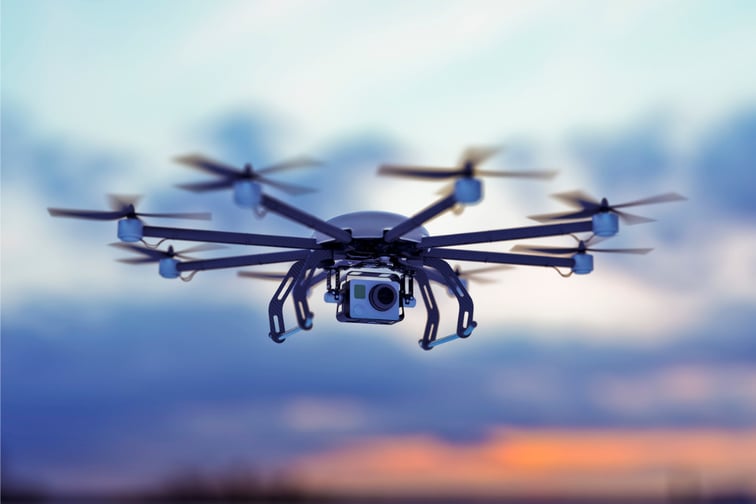

This article was produced in partnership with Adorama Business Solutions
It wasn’t that long ago that insurance providers were trying to wrap their heads around the emergence of insurtech companies and the path they were taking through the all-too-often slow-to-adapt insurance sector.
Just trying to move from a document-based way of doing business to new and streamlined technology platforms was considered a leap for an industry that has long done things the ‘traditional’ way.
That was yesterday’s news, however. Today, the use of advanced forms of technology is becoming commonplace for insurance adjusters, underwriters, and agents in companies of any size for their day-to-day on-the-job duties.
The ability to adapt to the changing needs of the insurance sector and the increasing demands from a client base that expects a seamless and efficient digital insurance experience is forcing many insurance providers to provide state-of-the-art technology to conduct their business.
One such technological advance is the use of modern and advanced drones within different private and public sectors, including the insurance field, for a multitude of purposes. This emerging technology is the centerpiece of a recent whitepaper prepared by Adorama’s Business Solutions team entitled Insurance & Drones: What to Know to Capitalize on New Technology.
As with most new and emerging technology, there is often a tangible fear and misunderstanding surrounding the use of drones that may linger with the public.
To truly capitalize on the benefits that cutting-edge drone technology provides for businesses and consumers, misconceptions need to be stamped out and knowledge of drone capabilities needs to flourish.
Read next: Drones will bring sky-high efficiency

CJ Smith, category manager, drones with Adorama Business Solutions
“Drones are really just getting high-performance cameras into really hard-to-reach places,” CJ Smith (pictured above), category manager, drones, with Adorama’s Business Solutions team, suggested.
“Drones can have, depending on who you talk to, certain [negative] connotations - like people may think they are getting spied on and there is something sinister when they think about drones buzzing around,” he added.
The answer, for Smith, lies in providing open dialogue and dispelling myths when educating insurance professionals, consumers, and different private and public businesses about the role that drones play.
“An unknown flying object for some people can cause nervousness and uncertainty,” Smith elaborated.
In Adorama’s whitepaper, the topic of transparency is also paramount.
“Creating transparency and letting people know what you are doing with the drones just dispels any of those unknowns,” Smith stated.
The various insurance industry-targeted applications for drone technology are outlined in the whitepaper, ranging from roof and boiler inspections, post-disaster claim inspections, pre-disaster mapping, to the integration with Artificial Intelligence (AI).

James Bushey, director of technical specialists with Adorama Business Solutions
“You can leverage a robot to do the work for you, where you don’t have to put someone in harm’s way, and that can be as simple as climbing a ladder to look at the top of a roof to see where the damages are,” James Bushey (pictured immediately above), director of technical specialists with Adorama’s Business Solutions team, explained.
Providing real-life examples also helped to summarize the main points brought out in the whitepaper.
“After Hurricane Harvey in the Houston area, there was tremendous flooding. Instead of going to one house at a time and having [insurance] adjustors go roof to roof, a drone will enable you to map out the entire area and see where the flooding is on a large scale,” Bushey described.
“We are creating a 3D map which is really a [series of] high-resolution photos to look at the different affected areas,” he elaborated.
Bushey and Smith both point out in the whitepaper that beyond being able to provide aerial insurance inspections of assets and infrastructure, insurance providers can leverage drone technology to help with claims and provide key information to underwriters when assessing damages.
With the increasing severity of weather events, the job of insurance professionals is becoming harder and more complicated.
With the application of drone technology, the whitepaper illustrates that drones have made it less dangerous to inspect property damage. Claims adjusters are now able to obtain data from harder-to-reach storm-affected areas, staying out of the path of the storm’s aftermath.
Insurance companies are utilizing drone technology to their advantage more and more as we climb out of the pandemic and look to the years ahead.
Not only is the insurance sector cognizant of the positive impact of drone technology on business, but the technology is also at a point where it is commonplace for many insurance providers.
This trend is set to continue.
“Technology is improving in leaps and bounds every year,” Smith reflected.
“It’s really exciting. I think we’ll see way more of this technology being used, especially when you are putting humans in harm’s way, such as when insurance firms are doing roof inspections.”
Bushey couldn’t agree more with his colleague.
“Technology is getting so good and much safer. There will be a drone that’s going to be out there to help people do their work more efficiently,” Bushey said.
“It will be the norm going forward. We will start to look back and say: ‘I can’t believe we had people doing these jobs before’,” Smith concluded.
James Bushey, the director of technical specialists at Adorama, has an extensive history in law enforcement. He served as a police officer in the Town of Linn Police Department, Wisconsin since 2006, and served as the Chief of Police from 2016 to 2021.
CJ Smith is a digital marketer and content producer, specializing in live events and entertainment, drones, and UAS. Smith has extensive experience in digital marketing strategy and execution, content creation, strategy and distribution, email marketing, social media marketing, live events, and more.
Karen Surca of Insurance Business America sat down with CJ Smith, category manager, drones, with Adorama Business Solutions, and James Bushey, director of technical specialists with Adorama Business Solutions to discuss the often feared and misunderstood area of drone technology and how it is positively impacting the insurance industry.
